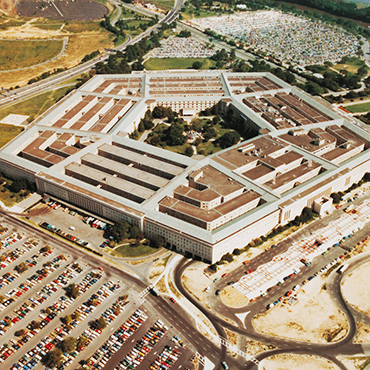Beyond better buying power: DOD acquisition reform needs a boost

A key finding of a new study: Competition can prod incumbents to perform well and incentivize others to come in and produce better solutions.

In a new report, the IBM Center for the Business of Government outlines eight recommendations for the Defense Department to improve the way it buys goods and services – a reform effort that has been ongoing, in some form, for the past 50 years.
To date, DOD acquisition reform hasn’t gotten very far, particularly in recent years when the torrent of wartime funding camouflaged ineffective buying practices. The struggle is further underscored in a department-wide shift from buying more goods to buying more services, which requires different rules that have yet to materialize.
“Of approximately $400 billion spent on contracts for goods and services in FY 2011, over half was spent on services,” notes the executive summary of the report, released Dec. 17. “Yet the rules, policies and practices are based solely on buying goods; and there are differences in optimizing the procurement of a tank and an engineer.”
Targeting the appropriate use of competition, the first step, is one of the core steps in improving the acquisition process. It’s widely recognized that competition is tied to reduced costs and better performance, but it’s not always properly wielded.
The Pentagon’s Better Buying Program calls for all services to be re-competed every three years, but the report notes that the requirement discourages companies from investing in quality performance and services since the contract will be up for competition in three years no matter how good a job they do.
“Competition, when done properly, can be an incentive for incumbents to perform well – because if they perform well, there’s a better chance of getting the follow-on contract that enhances the value,” said Dan Chenok, executive director for the IBM Center for the Business of Government. “Competition also can incentivize competitors to come in and produce better solutions.”
Types of contracts also make the list of recommendations, including the use of indefinite delivery/indefinite quantity and lowest price technically acceptable. In the case of the former, overuse now contributes to duplicative contracts that are too broad. LPTA originally was intended for buying commodities with little variation in quality, but the approach now gets applied to services, which drives down quality.
“If you drive down the price too far, you’re going to lose the abilities of highly skilled practitioners in industry, because industry won’t be able to afford to hire skilled enough workers to meet the LPTA model,” Chenok said.
Another problem Pentagon acquisition officials face is barriers in buying commercial products. Despite the fact that the defense industry could, in many cases, save by buying the same products and services as the civilian and commercial sectors, certain acquisition policies discourage such dual-use industrial operations. As a result, most contractors have separate commercial and government sides. Additionally, export controls deter some companies from doing defense work.
“As technology evolves and as companies around the world provide value to customers by developing good and services ... the more the government can leverage in its buying and the more DOD can capitalize on technology’s offerings at a good price available in the commercial market,” Chenok said. “There is recognition in some cases where DOD needs a government-only buying strategy, but that needs to be narrowly targeted.”
Such changes likely will require altering laws that dictate the way the government can buy goods and services, as well as Federal Acquisition Regulations – guidelines that have yet to catch up to the 21st century marketplace.
“These barriers are not necessarily enshrined in law but enshrined in practices through FAR, where firms are sometimes prevented from selling in the most functional way,” Chenok said. “None of this is to say that these protections don’t exist for a reason, and we want to make sure the government has accountability; we want to make sure that legislation there to protect the sustainability of the U.S. industrial base and the U.S. government. But it’s a question of degree – and as technology evolves...making sure the government is assessing what is the right line to draw.”
NEXT STORY: IT reform bill introduced in Senate


